Multiple Desktops, also termed Virtual Desktops are great to keep your work organized, especially if you are working with small monitors or if you need to open too many tabs simultaneously. You can open different programs on each virtual desktop and yes, you can create an unlimited number of desktops. This makes it pretty easy, quick, and hassle-free to switch between the desktops rather than the tabs. Yes, Windows lets you run multiple desktops on a single monitor. Let’s learn how you can create, use and manage Virtual Desktops in Windows 11.
If you have been using multiple desktops on your Windows PC already, you may know how good it is. And if you haven’t yet used it because you think it could be clumsy to handle them, this post may help you. It is really easy to switch between the desktops if you know the way. Let’s first learn how to create a Virtual Desktop in Windows 11.
How to Create Virtual Desktop in Windows 11.
It is very easy to create a new virtual desktop and manage multiple of them. In Windows 10, there was a small button in the extreme right of our taskbar to create a New Desktop, this is how it used to look back then.

Manage Virtual Desktop like a Pro in Windows 11
But, now in the latest Windows 11, there is a new black and white “Task View” icon in the taskbar, right beside the Seach option. To create a new Desktop, click on the Task View button and you will see the option to create New Desktop. Click on the + sign and your New Desktop is created. You can now open new tabs on this desktop. You can create as many desktops as you want.
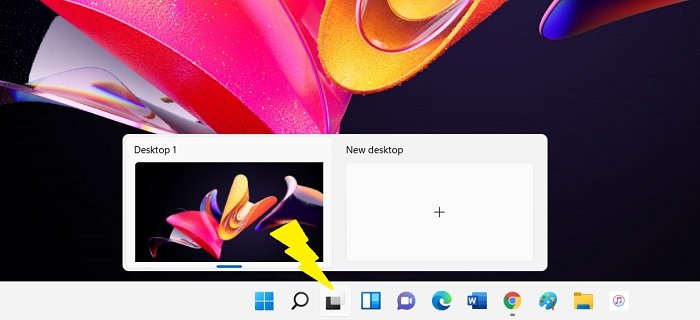
How to Manage Virtual Desktop in Windows 11
Here are a few tips and shortcut keys to help you manage your virtual desktops and make the best out of them.
1] Win+Tab- View all virtual desktops opened
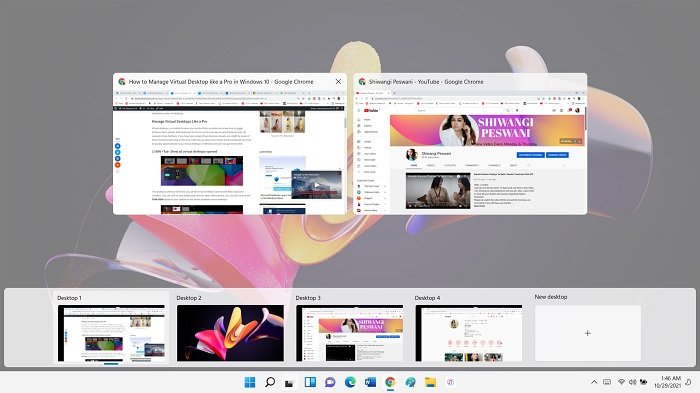
There are actually two ways to view all your virtual desktops opened- first by taking your mouse cursor to the Task View icon and second by pressing Win+Tab keys on your keyboard. While the former method will only show you the desktops opened, the latter one will also show the active tabs opened in those desktops. You will also see the numbers on each desktop and so you know how many of them are opened.
2] Win+Ctrl+D- Opens a new desktop
While you can use the basic method and take the cursor to the Task View icon and open a new Desktop, shortcuts are always better right? Win+Ctrl+D is the shortcut key to open a new desktop instantly. Or you can also press Win+Tab and then click on the New Desktop option.
TIP: You can also change the keyboard shortcut to switch between Virtual Desktops.
3] Move tabs to a different desktop
You can move any of your opened tabs to any of your opened desktops or even to a new desktop. Press Win+Tab to view all the opened tabs, go to the tab you want to move, right-click and click on Move to. You will then see the options, select the desktop you want to shift the tab to. You will also get the option to Show particular windows on all your desktops.
4] Snap your desktops
Exactly like we did to move the desktops, press Win+Tab to view all the opened desktops, go to the desktop you want to snap, and right-click. Select the option Snap Left or Snap Right and you are done. You can check the Screenshot no-5 for the same.
5] Rename your desktops
The desktops by default are named Desktop 1, Desktop 2, and so on, but you can rename them as per your own convenience. Take your cursor to the Task View to view all the opened tabs and go to the tab you want to rename and right-click. Select the option Rename and give it the name you want.
6] Change the background of opened virtual desktop
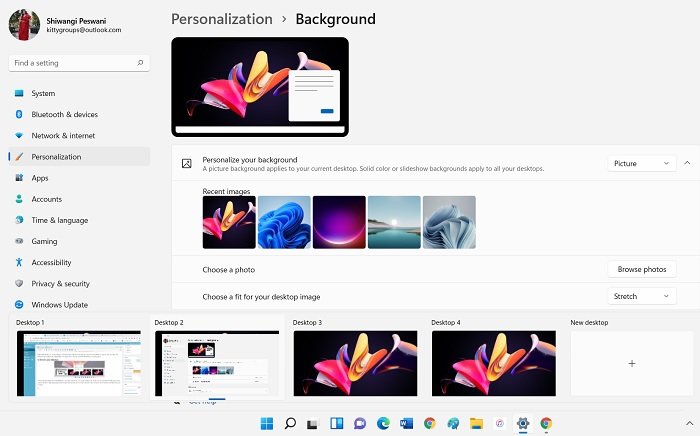
To change the background of any of your virtual desktops, take your cursor to the Take View icon and go to the desktop you want to change the background of and right-click. Select the option Choose Background. This will directly take you to the Personalization Settings where you can change the background. Isn’t that quick?
7] Move your desktops to the Left or Right
Same as we did to rename or change the background of our virtual desktops, take the cursor to the Task View icon and click on the desired option Move Left or Move Right. Alternatively, you can also use the keyboard shortcuts- Alt+Shift+Left and Alt+Shift+Right.
8] View the programs/tabs/apps opened in a particular desktop
Now, this is something very important. When we have multiple desktops opened in our single monitor, we would most likely not remember which app or program is opened on which desktop. So, here’s the trick- Press Win+Tab to view all the opened desktops and then hover the cursor over each desktop one by one and you will be able to see every program/app or tab opened. Sorted, right?
9] Close the virtual desktops
It’s pretty simple. Hover your cursor to the Task View icon and hit the Close button of the desktop you want to delete or close. Now, if you are wondering if all the tabs and programs opened on that particular desktop will also be closed, no. They will all be shifted/merged to the previous desktop. For example, if you have deleted Desktop no-3, all your programs/tabs opened in that desktop will be automatically moved to Desktop no- 2.
10] Multitasking
There is a setting of Multitasking on your Windows 10 PC wherein you can change the Virtual Desktops settings. G-o to Settings (Win+I)–> Systems–> Multitasking and click on Desktops. By default the settings are saved to Only the desktop I’m using but, you can set each to show on all desktops as per your own preferences.
How do I get the best out of Virtual Desktops?
Virtual Desktops are one of the best additions to the Windows operating system. It is handy for those who want to organize their tasks but do not have a multi-monitor setup. The best way to get the most out of virtual desktops is by mastering keyboard shortcuts. There are only a few of them, and you won’t need much time to spend to keep those in mind. Read our post on Virtual Desktop Tips and Tricks.
We hope this post will help you make the most of your virtual desktops on Windows 11.

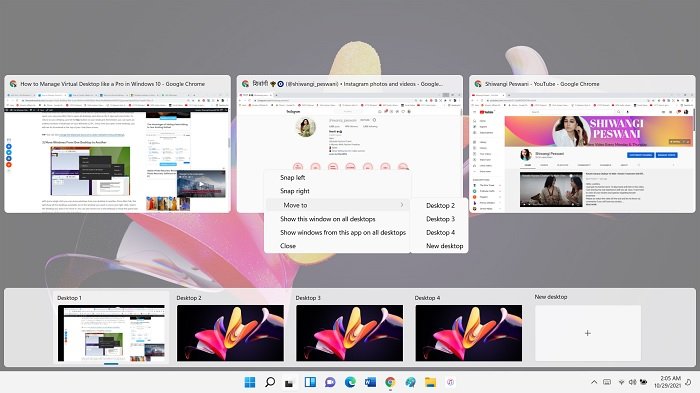
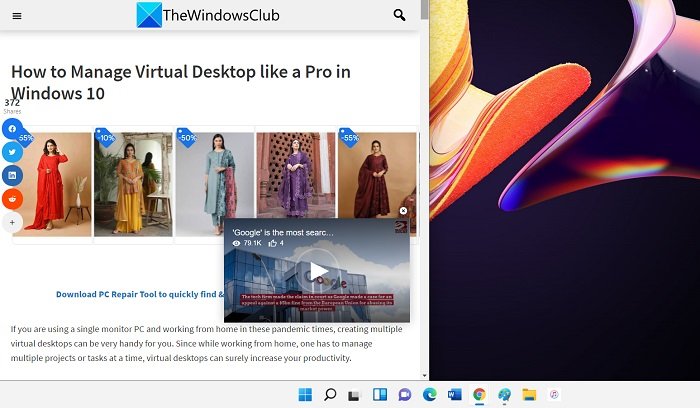
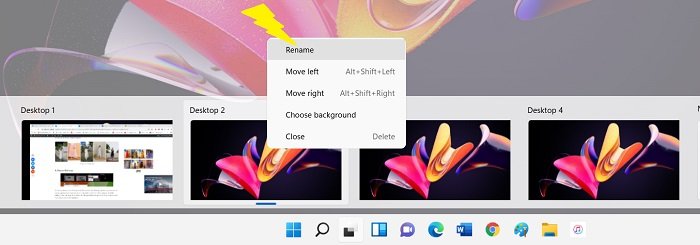
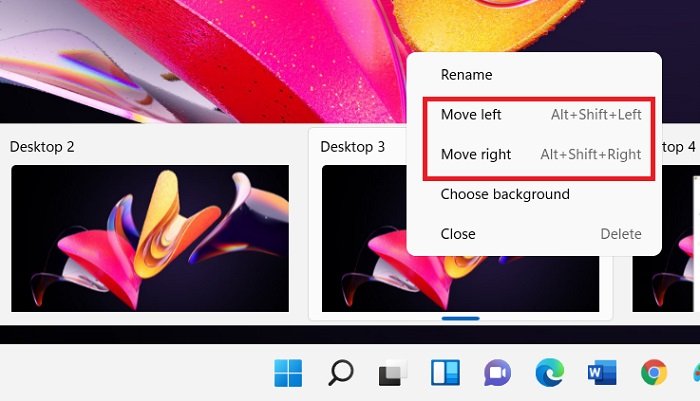
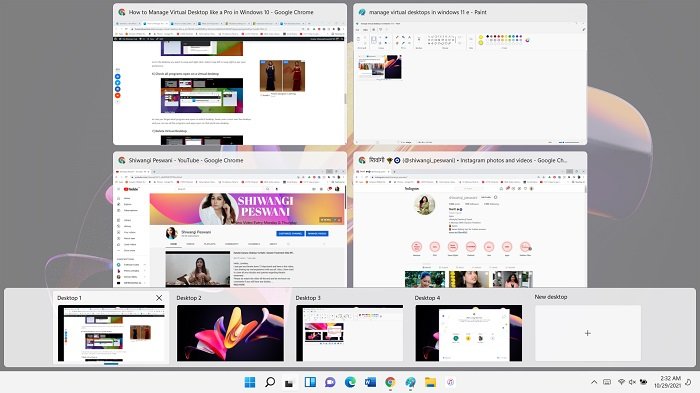
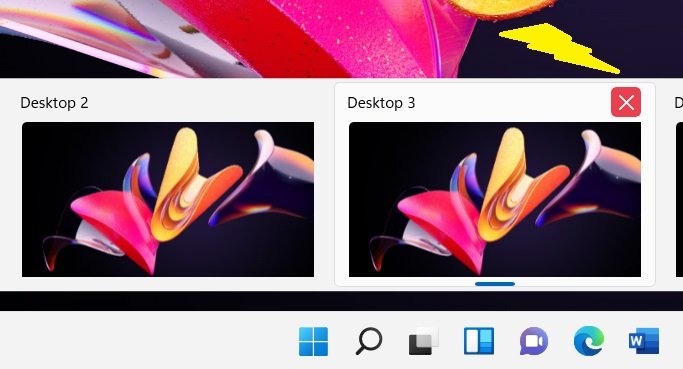
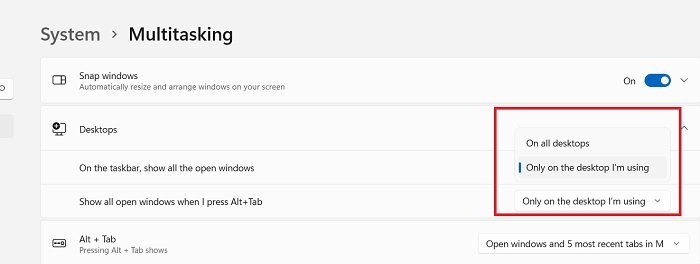
Leave a Reply